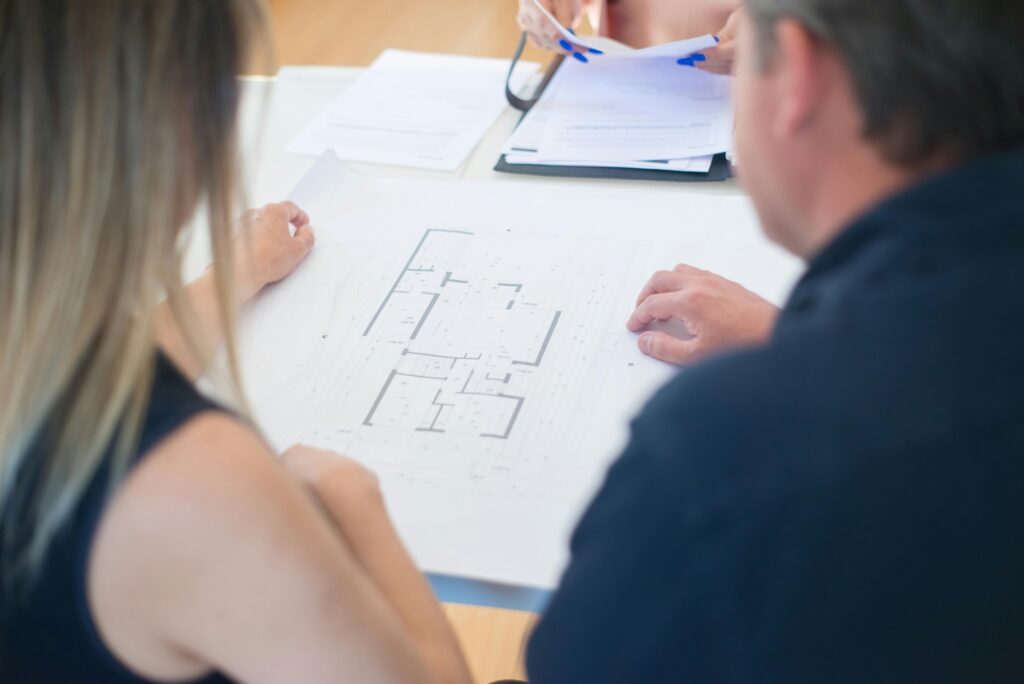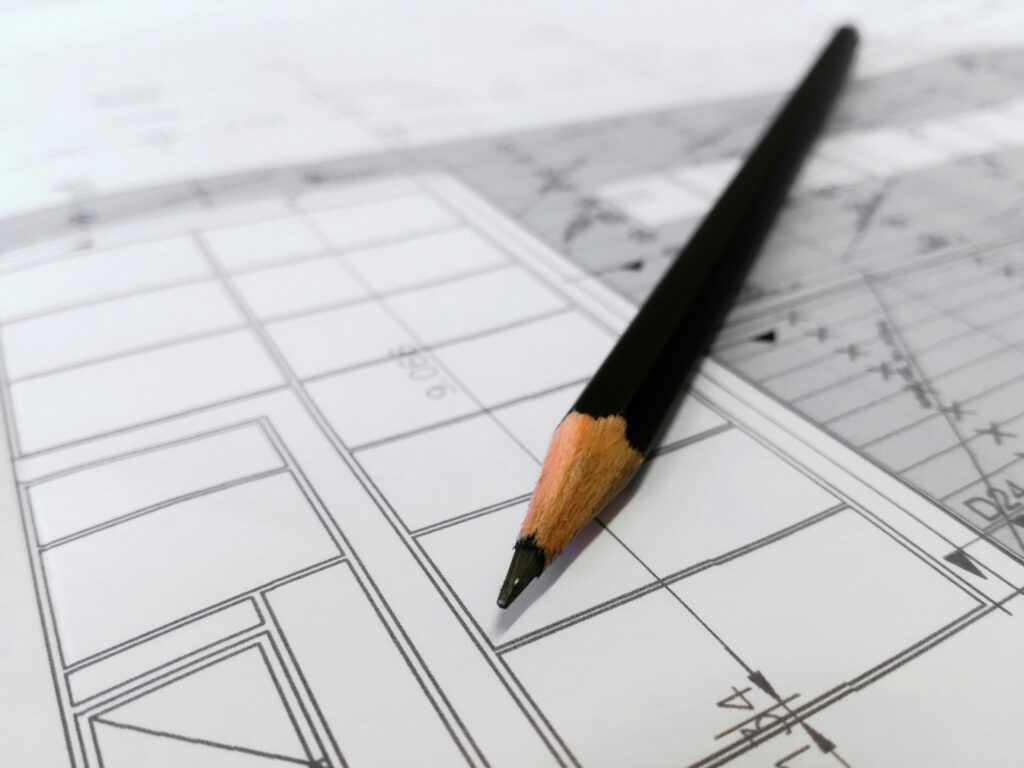Building a new structure, whether a house extension or a larger development, requires a solid foundation. While traditional strip or pad foundations are common, raft foundations offer a compelling alternative in certain soil conditions and building designs. This blog post, with insights from our structural engineers at Sussex Structural Engineers, will delve into the world of raft foundations, exploring their advantages, disadvantages, and key considerations.
What is a Raft Foundation?
A raft foundation, also known as a mat foundation, is a large, reinforced concrete slab that spreads the load of the entire structure over a wider area. Unlike individual footings, a raft foundation acts as a single, continuous element, providing support for all the walls and columns of the building.
When to Use a Raft Foundation
Choosing the right foundation type is crucial for the long-term stability and success of any construction project. Raft foundations are particularly well-suited for specific circumstances, as detailed below:
- Poor Ground Conditions: This is the most common reason to choose this type of foundation. When the soil has low bearing capacity (e.g., soft clays, loose sands, or filled ground), the weight of the structure is distributed more evenly, reducing pressure on the soil and minimizing the risk of differential settlement. Think of it like snowshoes distributing your weight on soft snow.
- High Water Table: In areas with a high water table, traditional foundations can be difficult to excavate, expensive, and increase the risk of water damage during construction. This type of foundation can often be built with minimal excavation, reducing these risks. It essentially creates a base that rests on the water-saturated ground.
- Heavy Structures: For large or heavy buildings, this foundation type provides a stable, uniform base, preventing excessive settlement and ensuring structural integrity. The larger the load, the larger the bearing area needed, which is exactly what this foundation offers.
- Complex Building Footprints: When a building has an irregular shape, closely spaced columns, or a design that makes traditional footings impractical, this type of foundation can simplify the construction process and provide a more even distribution of loads. It creates a single, unified base regardless of the building’s complexity.
- Minimizing Settlement: Even when ground conditions are not poor, if minimizing potential settlement is a priority (for sensitive equipment within the building, for example), this foundation type can be a good choice.
- Basement Construction: This foundation is often used as the base slab for basements, providing a waterproof and structurally sound foundation.

When Not to Use
It’s equally important to understand when a raft foundation might not be the best choice:
- Very Stable Ground: If the ground is exceptionally strong and stable, a raft foundation might be overkill and unnecessarily expensive. Simpler, less costly foundations would likely suffice.
- Significant Slope: Building on a significant slope can make constructing a raft foundation challenging and might require additional engineering solutions, potentially making other foundation types more suitable.
- Cost Constraints: Raft foundations are generally more expensive than traditional foundations due to the larger amount of concrete and reinforcement required. If budget is a primary concern, and the ground conditions allow, alternative foundation systems may be more appropriate.
- Specific Design Requirements: Certain building designs or local building codes might impose restrictions that make a raft foundation unsuitable.
Advantages of Raft Foundations
- Reduced Settlement: By distributing the load over a large area, raft foundations minimize differential settlement, which can cause cracks and structural problems.
- Simplified Construction: Compared to complex foundation systems, raft foundations can be easier and faster to construct, potentially saving time and money.
- Increased Stability: The large, continuous slab provides excellent stability, particularly in areas prone to seismic activity or ground movement.
- Reduced Excavation: In some cases, raft foundations require less excavation than traditional foundations, reducing costs and disruption.
Disadvantages of Raft Foundations
- Higher Material Costs: Raft foundations require a significant amount of concrete and reinforcement, which can increase material costs.
- Susceptibility to Edge Effects: The edges of the raft can be more susceptible to settlement or cracking if not properly designed and reinforced.
- Requires Careful Design: Raft foundations require meticulous design by a structural engineer to ensure they can adequately support the building loads and withstand soil pressures.
- Potential for Increased Uplift Pressure: In areas with high water tables, uplift pressure can be a concern. The design must account for this to prevent the raft from being lifted.
Structural Engineer Insights: Key Considerations for Raft Foundation Design
At Sussex Structural Engineers, we emphasize the following key considerations when designing raft foundations:
- Soil Investigation: A thorough geotechnical investigation is crucial to determine the soil properties, including bearing capacity, compressibility, and water table level. This data informs the design and ensures the raft is appropriately sized and reinforced.
- Load Calculations: Accurate load calculations are essential to determine the total weight of the structure and its distribution across the raft. This includes dead loads (weight of the building materials) and live loads (occupancy loads, wind loads, etc.).
- Reinforcement Design: The reinforcement within the raft must be carefully designed to resist bending moments and shear forces. The type, size, and spacing of the reinforcement bars are critical to the raft’s performance.
- Edge Detailing: Special attention must be paid to the edges of the raft to prevent cracking and settlement. This often involves additional reinforcement and thickened edges.
- Uplift Prevention: In areas with high water tables, we may incorporate features like drainage systems or ground anchors to counteract uplift pressure.
- Connection to Superstructure: The connection between the raft foundation and the superstructure (walls, columns) must be designed to transfer loads effectively and prevent movement.
Choosing the Right Foundation for Your Project
Selecting the appropriate foundation type is a critical decision. While raft foundations offer many advantages, they are not always the best solution. Our structural engineers can assess your specific site conditions, building design, and budget to recommend the most suitable foundation system for your project.
Ready to discuss your foundation needs?
Contact us today for a free consultation. Our team at Sussex Structural Engineers can provide expert advice and design services for raft foundations and other structural elements of your project.
Call us at 01323 409851 or email us at office@sussexstructuralengineers.co.uk.
Let us help you build a solid foundation for your future.

